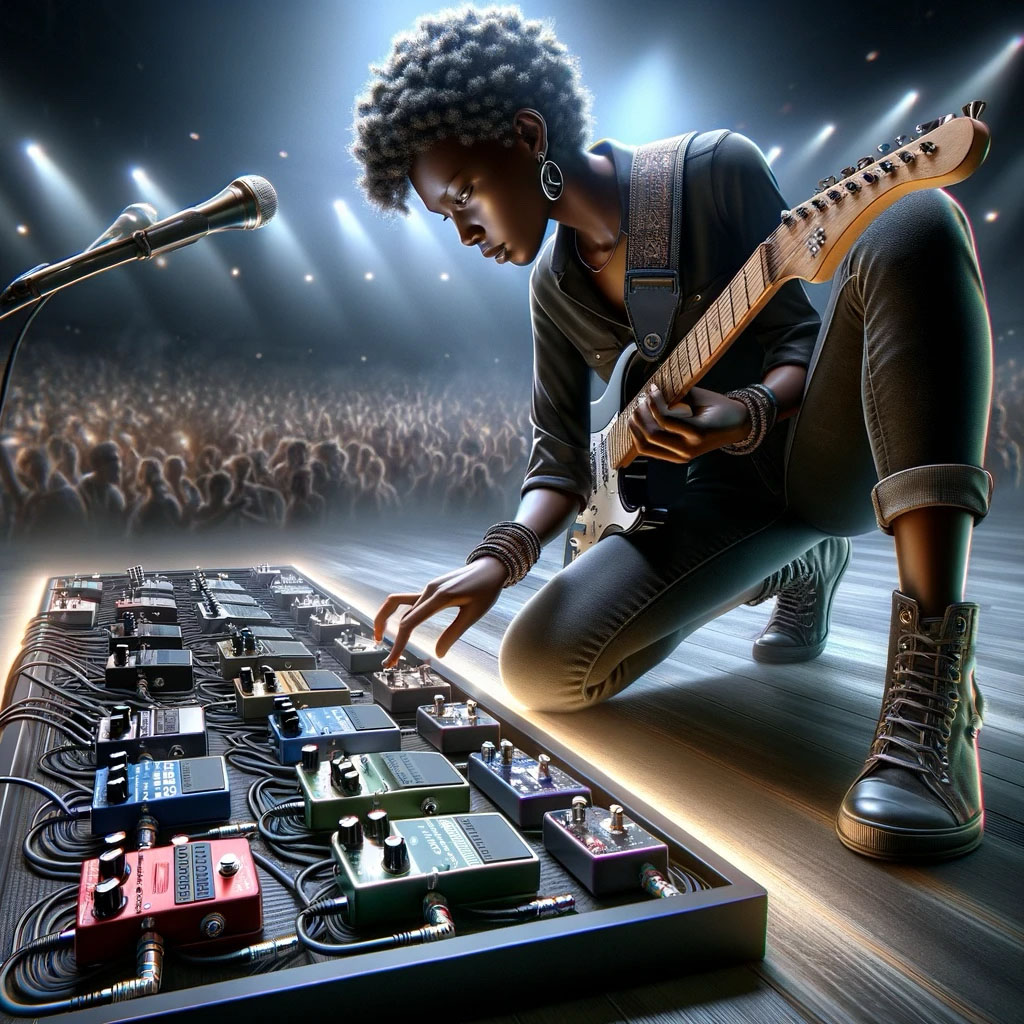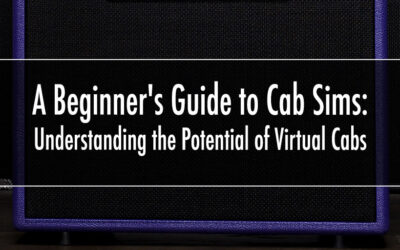
Why Would I Create A Pedal Masterclass?!
Before I started the guitar pedal business, I was always incredibly fascinated by how these little, tiny boxes full of magical electronic components could change the sound of the guitar drastically in a variety of ways. This fascination is actually what led me to start digging into them, to see if I could change any of the components inside to get a different sound that I liked a little bit better.
Once I realized it was so much fun for me to tweak those pedals, I decided that I wanted to create my own pedals. I suppose I naturally gravitated towards gain-based pedals, just simply because those were the ones that I used the most often. Keep in mind, we’re going back 25, 30 years ago or so. During that time, I spent a large part of my life figuring out the ins and outs of all this stuff. What makes one pedal work better than another for a particular situation? What happens if Pedal A connects to Pedal B with the knobs in a certain way? I’ve always been naturally curious, and this curiosity has led me here. I wouldn’t trade it for anything.
I realized a long time ago that a lot of these thoughts and ideas kind of seem like voodoo to some. To many folks, guitar tones and sound in general seem like some sort of magical, mystical process. But there’s also the other side of the crowd, which looks at it much more scientifically. For those that have studied engineering, they’ll know that the idea of distorting a circuit intentionally is an odd one. Schooling teaches how to create a circuit that does not distort, rarely the opposite.

Over the years, I’ve spent a lot of time trying to help people navigate these waters, and it’s always been a goal of mine, a desire of mine, to create some sort of course that passes on my knowledge to the next generations to follow. So, what we have here is my first course of many to come, which is an in-depth course on ‘Gain-Based Guitar Pedals,’ including overdrive, distortion, fuzz, boosters, compressors, and noise gates. So let’s dive into what this first course goes into, and how it can bring you value.
If we’re being honest, gain-based effects are the cornerstone of guitar sounds. The classic guitar sounds that we’ve heard for years are based around playing a guitar through an amplifier that was distorting, out of its failure to remain clean. And we loved that, much to the dismay of those who didn’t understand. People like me created companies that intentionally capitalized on the “failures” of electronics in order to get a great-sounding guitar tone. As much as people love this sound, unfortunately, there has always existed a gap in understanding how these electronics, guitar pedals, and amplifiers truly work and interact with each other to create guitar tones that people love. It’s my goal to educate and help others understand this better.
So, with that said, the inspiration for this course stemmed from all the numerous conversations I’ve had with guitar players, a million different threads on guitar forums and pedal groups where it was obvious there was a lot of confusion, and a lot of misinformation. Even today, there are still many folks who don’t quite understand the difference between overdrive and distortion, and it’s not hard to find a thread where guitar players just don’t quite get how to use compressors, how to set the knobs, or what those knobs even do. Heck, there are still quite a few people who struggle to hear the difference in sound when a compressor is on versus when it’s off. This course was born from the desire to bridge these knowledge gaps, to demystify the complex world of all these types of effects that are based on gain principles, and ultimately, to give knowledge and power to guitar players in their quest for the perfect tone.
But this course isn’t just a surface-level overview, and it’s definitely not an unstructured YouTube-type video; it’s a deep dive into each type of these effects. We’ll discuss different types of overdrives, distortions, and fuzzes, setting those different types of pedals to get different types of guitar tones. And we’ll do the same for boosters, compressors, and noise gates. The compressor module, for example, goes into detail about the different types of compression circuits, their strengths and weaknesses, and different ways to use them to get different tones. For example, have you wondered how an optical compressor differs from a FET or VCA compressor? Have you wondered why there are different types and why that’s even important to you as a guitarist? We’ll dig into that.
Understanding the theory behind these pedals is one thing, but actually applying it is another. So, in this course, we’re going to emphasize a hands-on, practical approach. We’ll demonstrate how these pedals interact within a setup and how to optimize their placement for your personal needs.
A significant portion of this course is also dedicated to the art of stacking pedals: the order in which you place overdrives, distortions, fuzzes, compressors, boosters, etc. We’ll explore the traditional signal chain order and why it works, but we’ll also experiment with several different approaches to stacking in order to achieve unique tones. This will teach musicians how to create rich harmonic tones by stacking different types of dirt pedals, and how placing a compressor before or after a distortion can yield completely different results, leading to completely different tones for totally different reasons.

Also, this course isn’t just about me “spittin’ out” knowledge; it’s also about building a community of like-minded guitarists and pedal enthusiasts. Participants will have the opportunity to share experiences, ask questions, and learn from each other, as well as pick my brain about all sorts of pedal-related topics. This exclusive community is invaluable, as it allows for a diverse range of insights and approaches to using gain-based pedals within a group of people who are all striving for the same thing. Think of it as a highly focused group of folks who are just like you, but without the negativity that so often comes with guitar forums and groups.
But let’s be realistic: why does any of this matter, anyway? Well, the world of guitar pedals is huge and can often be overwhelming. So, with this course, I’m aiming to demystify these types of pedals and effects, ultimately making them accessible and understandable to guitarists of all levels. Whether you’re a touring pro looking to refine your sound or more of a beginner just starting to build your first pedalboard, I really believe this course has a lot to offer you.
So ultimately, what will you gain by taking this course? By the end of it, you’ll have a much deeper understanding of gain-based pedals, but also more confidence to use them effectively in your setup. And if you’re considering buying new gear, you’ll have a stronger base of knowledge to make those decisions. Even though the course isn’t really about buying new gear, it’s often a desire that many of us have. It’s my hope that this course will help you make better purchasing decisions, so you don’t have to go through the hassle of buying and selling repeatedly, all in an attempt to find a sound that you truly love.
Find the course here: https://www.guitarpedalcourse.com/courses/the-wampler-blueprint



0 Comments